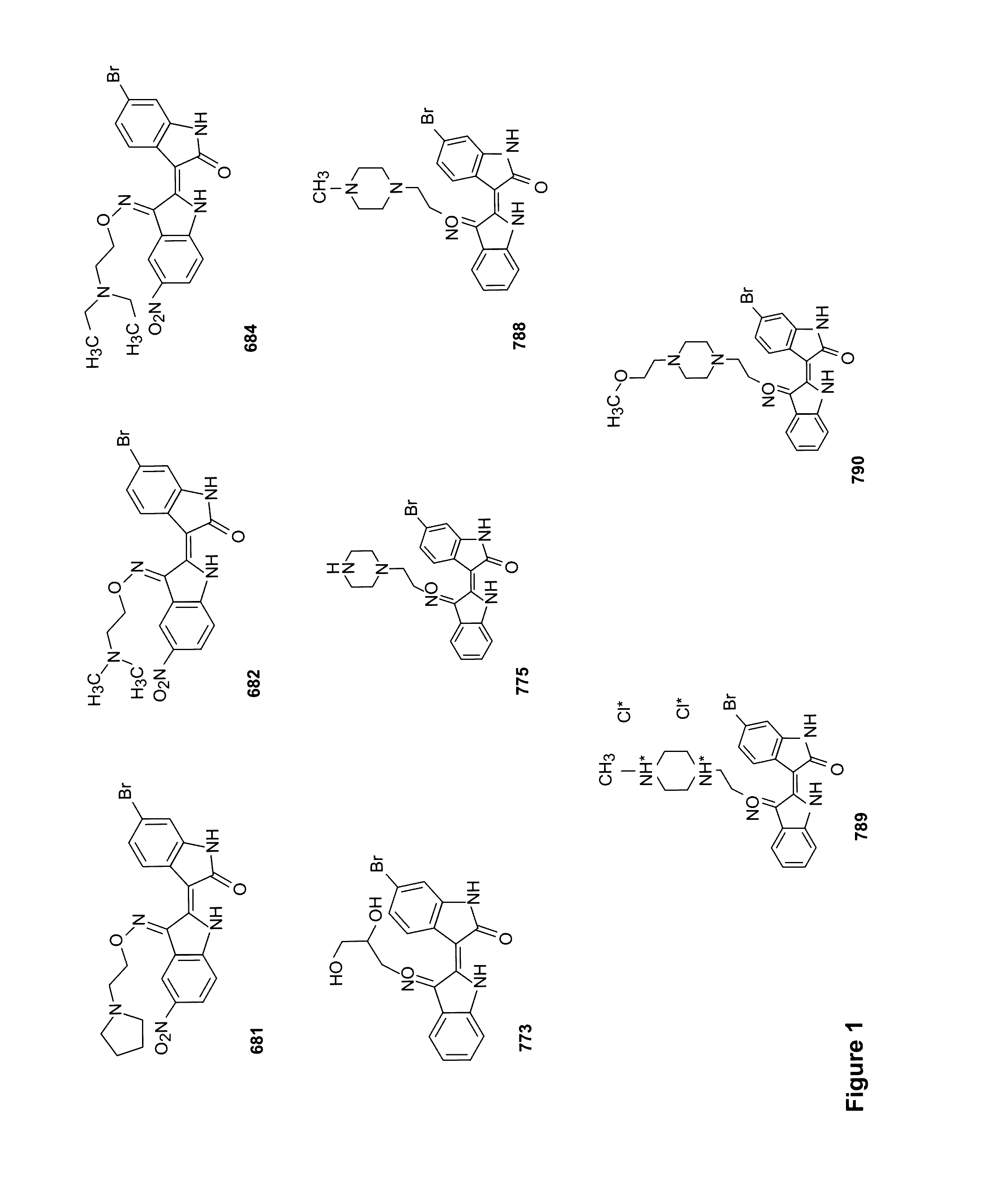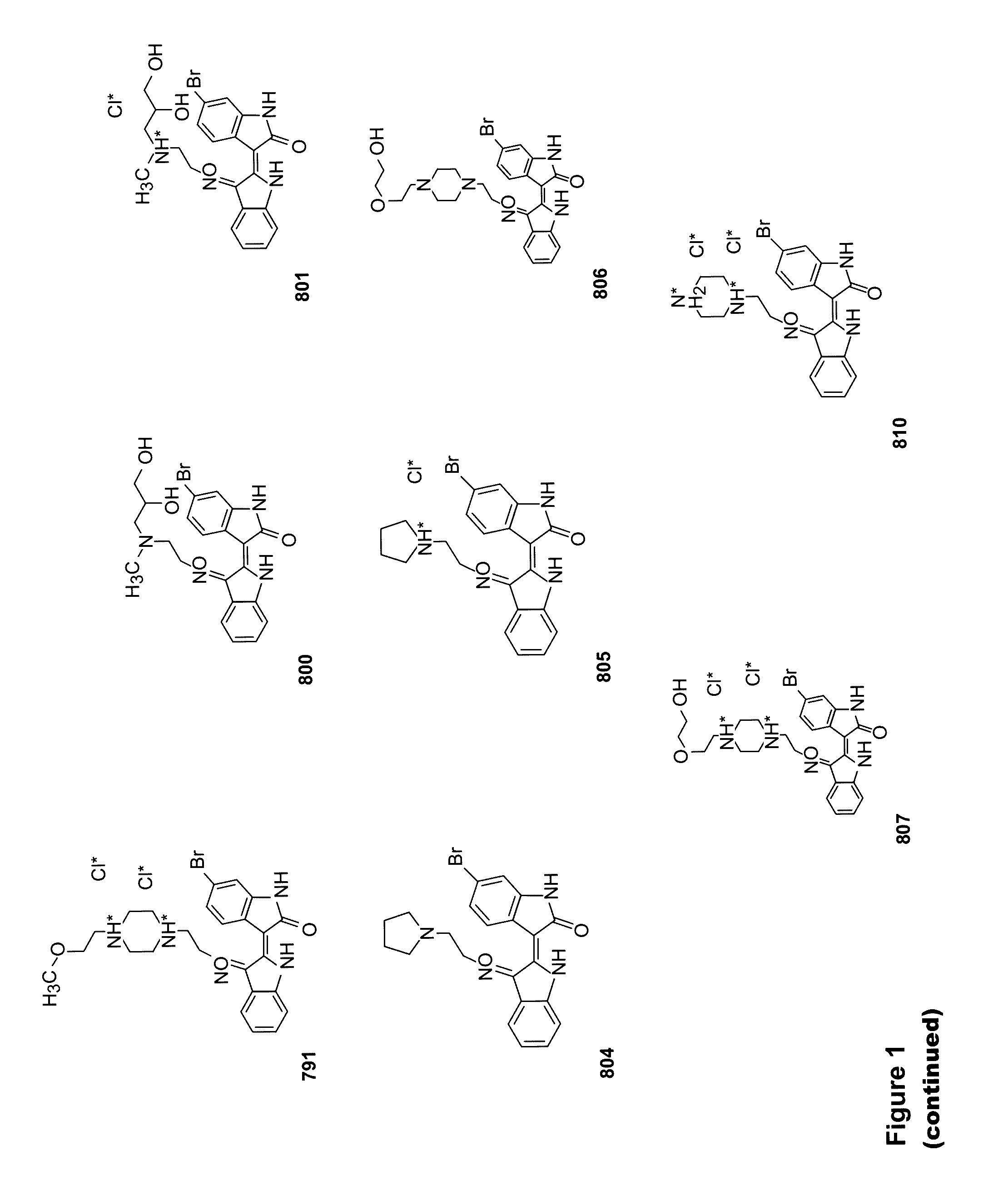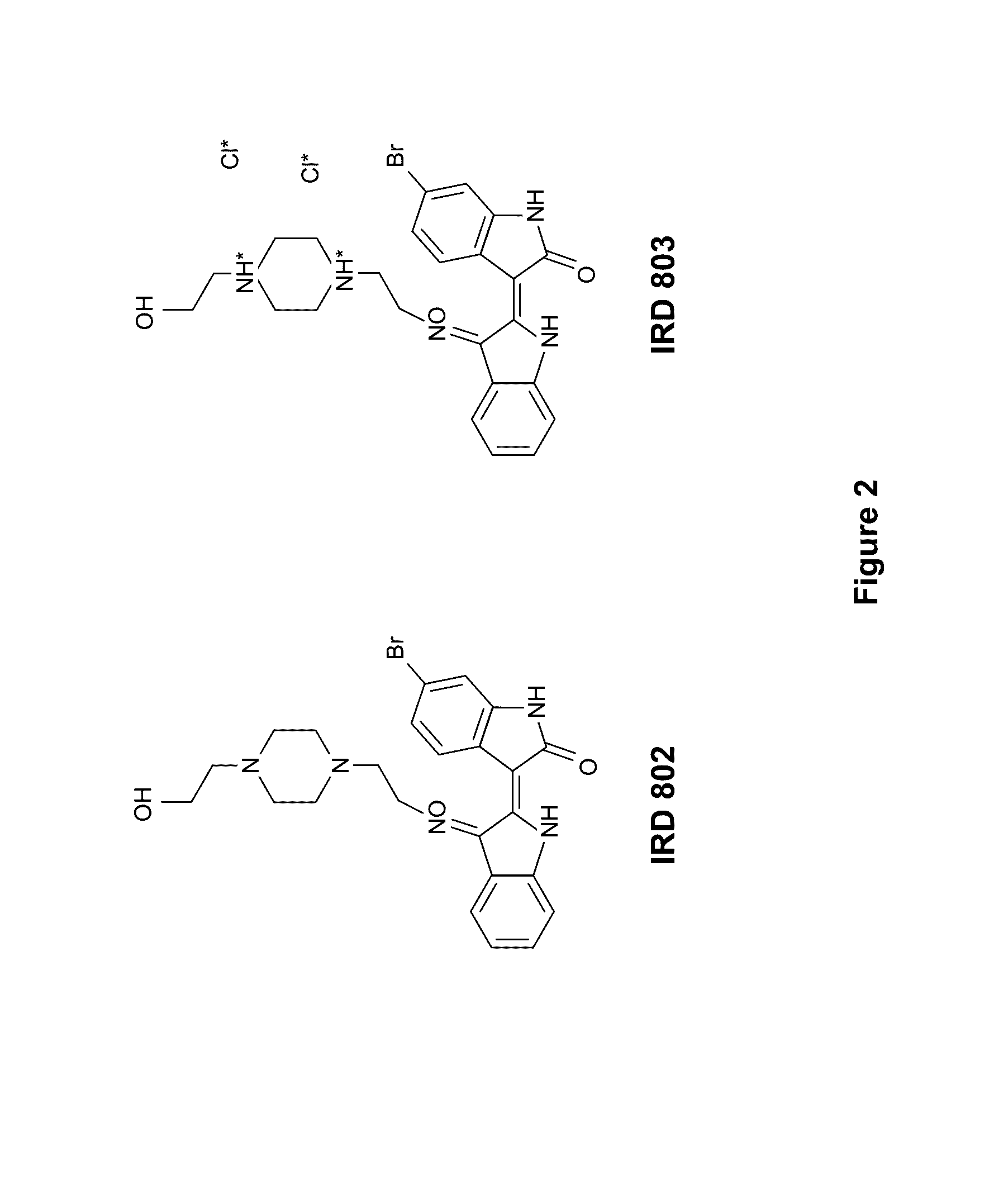Indirubin derivatives and uses thereof in treating chronic myelogenous leukemia
a technology of chronic myelogenous leukemia and derivatives, which is applied in the field ofindirubin derivatives, can solve the problems of largely unknown mechanism of action of irds in cml
- Summary
- Abstract
- Description
- Claims
- Application Information
AI Technical Summary
Problems solved by technology
Method used
Image
Examples
example 1
IRDs Inhibited Stat5 Activity
[0073]Cell Lines and Reagents
[0074]Human KCL-22 CML cells were obtained from the American Type Culture Collection (ATCC). Cells were cultured in RPMI-1640 media containing 10% fetal bovine serum (FBS). Imatinib-resistant human KCL-22 CML cells expressing the T315I mutant Bcr-Abl (KCL-22M) were derived from human KCL-22 CML cells (Yuan et al., 2010). Cells were grown in RPMI 1640 media supplemented with 10% FBS. Monoclonal antibodies to Abl protein and phosphotyrosine (p-Y) were obtained from BD Biosciences (San Diego, Calif.). Polyclonal antibodies to p-Stat5 (Y694) and p-Src family (Y419) were obtained from Cell Signaling Technologies (Cambridge, Mass.). Polyclonal antibodies to Stat5 were from Santa Cruz Biotechnology (Santa Cruz, Calif.). Monoclonal antibody to Src was obtained from Millipore (Billerica, Mass.).
[0075]Western Blot Analyses
[0076]Western analyses were performed as described previously with minor modification (Nam et al., 2005b). Briefly,...
example 2
Effects of IRDs on T315I KCL-22 CML Cells
[0087]MTS assays were performed for cell viability as described by the supplier (Promega, Madison, Wis.). T315I KCL-22 CML cells were seeded in 96-well plates (10000 / well), and incubated overnight at 37° C. in 5% CO2, and exposed to 1 μM of a test compound (IRDs 681, 682, 684, 773, 790, 791, 800˜807, or 810) for 48 hours. Dimethyl sulfoxide (DMSO) was used as the vehicle control. Viable cell numbers were determined by tetrazolium conversion to its formazan dye and absorbance was measured at 490 nm using an automated ELISA plate reader. Each experiment was performed in duplicate. Data are shown in mean (FIG. 4).
[0088]Several test compounds (IRDs 681, 682, 684, 790, 791, 800, 801, 804˜807, 810) showed approximately 60%˜75% loss of cell viabilities of these mutant cells at 1 μM concentration (FIG. 4). IRD 773 showed approximately 50% loss of cell viabilities of these mutant cells at 1 μM concentration (FIG. 4).
example 3
Effects of IRDs on KCL-22 CML Cells
[0089]MTS assays were performed for cell viability. KCL-22 CML cells were seeded in 96-well plates (10000 / well) and exposed to 1 μM of IRDs 681, 682, 684, 773, 775, 788˜791, 800˜807, or 810 for 48 hours. Dimethyl sulfoxide (DMSO) was used as the vehicle control. Viable cell numbers were determined by tetrazolium conversion to its formazan dye and absorbance was measured at 490 nm using an automated ELISA plate reader. Each experiment was performed in duplicate. Data were mean of the duplicate experiments. KCL-22 CML cells showed approximately 60%˜90% loss of cell viabilities after treated with IRDs 681, 682, 684, 773, 775, 788˜791, 800˜807, or 810 as described supra (FIG. 5). KCL-22 CML cells showed approximately 80% loss of cell viabilities after treated with IRDs 682, 773, 800˜807, or 810 as described supra (FIG. 5).
PUM
| Property | Measurement | Unit |
|---|---|---|
| temperature | aaaaa | aaaaa |
| concentration | aaaaa | aaaaa |
| pH | aaaaa | aaaaa |
Abstract
Description
Claims
Application Information
 Login to View More
Login to View More - R&D
- Intellectual Property
- Life Sciences
- Materials
- Tech Scout
- Unparalleled Data Quality
- Higher Quality Content
- 60% Fewer Hallucinations
Browse by: Latest US Patents, China's latest patents, Technical Efficacy Thesaurus, Application Domain, Technology Topic, Popular Technical Reports.
© 2025 PatSnap. All rights reserved.Legal|Privacy policy|Modern Slavery Act Transparency Statement|Sitemap|About US| Contact US: help@patsnap.com



